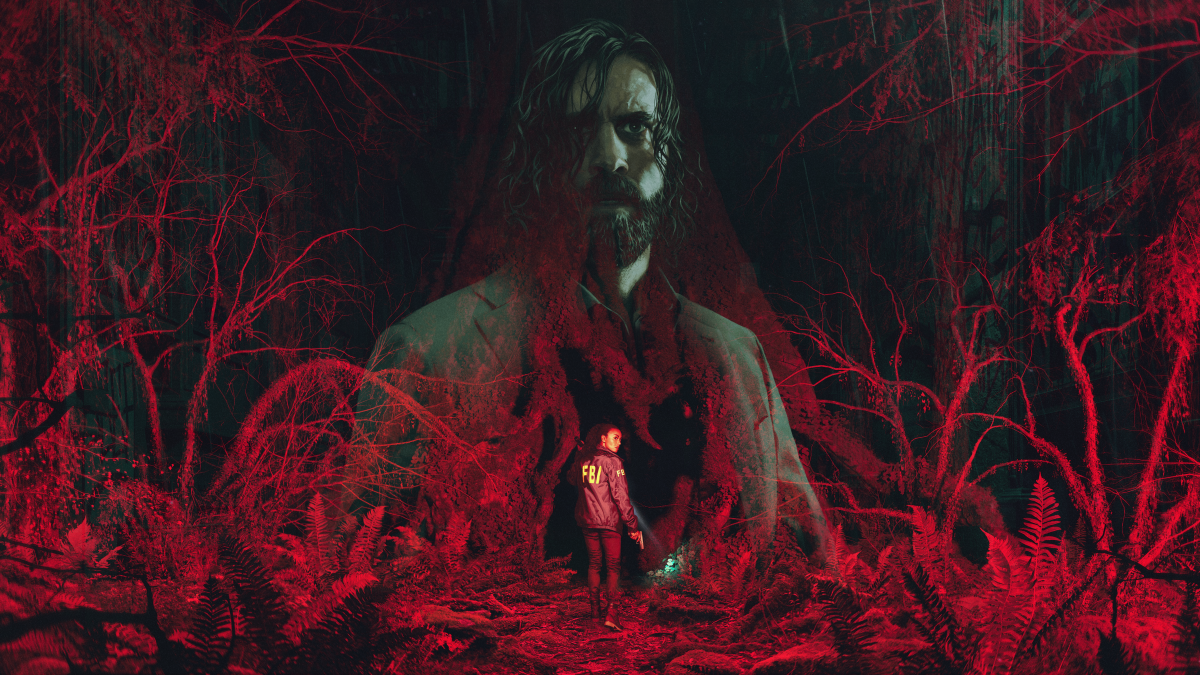Entertainment
‘Alan Wake II’ review: A horror masterpiece

There is nothing out there quite like Remedy Entertainment’s Alan Wake II. A tense, slow, and acid-induced horror journey through the eyes of its main protagonists, Alan Wake and Saga Anderson, Alan Wake II sits at the very pinnacle of the survival horror genre.
If that sounds like high praise, well, it is, because it’s a damn good game. Building upon not just its predecessor, Alan Wake, but on everything within the Remedy catalog — taking the old and creating a wholly unique gaming experience, unlike anything its contemporaries in the genre offer.
Alan Wake II launched on Oct. 27, and from the 14 hours I played — about 70 percent of the game — I was very impressed. In a month stacked with heavy hitters such as Marvel’s Spider-Man 2 and Super Mario Bros. Wonder, Alan Wake II is a stand-out that kept me hooked.
Crab MLMs, gay Dracula, and Pooh Bear body horror: 9 of the greatest upcoming games at SXSW Sydney
You will never feel safe

What’s a horror story without a cult in the woods?
Credit: Remedy Entertainment/Epic Games
Alan Wake II‘s inspirations reach across all genres and mediums, creating a game that both feels familiar and unique at the same time. From its Twin Peaks-inspired town to its grungy, dirty crime noir nightmare version of New York City, the games’ two worlds offer players a feast for the eyes.
The game, set 13 years after its predecessor, sees FBI Agent Saga Anderson travel to the fictional town of Bright Falls, Washington, to investigate several disappearances and murders that have taken place in town. Meanwhile, the titular Alan Wake tries to write himself out of the Dark Place — a surreal alternate reality outside space and time that can turn art into reality — which sits at the bottom of Bright Falls’ Cauldron Lake.
Players can at any time switch between the two protagonists, its two worlds offering a distinctive style and tone. The two areas are small, dense, and technical marvels to enjoy. As Saga, players are introduced to a methodical, investigatory slow-burn detective story, while Wake is trapped in a filthy art-deco neo-noir meets horror movie mashup. And it’s a clear choice by Remedy to make its story a slow, plodding build so as to invest players in its characters and mystery.
Essential to this detective story is the game’s central mechanic, the Plot Board, which Saga can access from her Mind Place — a sort of quasi-pause menu where players can piece together deductions made from their investigations of the main quest and the various side quests found around town and other areas. It’s a unique way of keeping track of character progression but also doesn’t require the player to use it in order to figure out how to progress the plot. This allows players to piece together the case themselves without the game holding their hands as they explore the surroundings on offer.
And that’s a good thing because this game demands the player’s attention as they slowly walk through the beautiful town of Bright Falls and the surrounding areas of Watery and Cauldron Lake. Set in the Pacific Northwest, trekking through these areas as Saga is a treat as the environments feel natural and authentic, with Remedy playing into its strength with compelling environmental storytelling. Wading through the woods outside of town as your investigation furthers, the sound design and level of detail make sure you never feel safe. There is always a sense of foreboding doom the minute you leave your safe havens, and it makes for a tense journey as you progress through the game.

Nightmare New York is what every conservative thinks NYC looks like.
Credit: Remedy Entertainment/Epic Games
The stark contrast to the greenery and stunning views of Bright Falls is Alan Wake’s nightmare version of New York City. An unnatural, grimy place, this version of New York feels like being trapped in an art museum after hours. Each building was placed with careful consideration, as if the city was put on display for the mind of its imprisoned inhabitant. The area is detailed and dense, with everything from the street clutter to the graffiti on the wall having some message behind it. The ambiance of the city is filled with broken street lamps and dingy neon lights that guide Alan toward his next objective. Compared to the strange eeriness of Bright Falls, the world of Nightmare New York is more hard-boiled, its city inspired by right-wing vigilante fantasies like Death Wish and its ilk.
The world design, by far, is the greatest part of Alan Wake II. It’s small and intimate, and it tells a hundred stories before a word is even said. It’s atmospheric in a way that not even a lot of immersive sims are, and it allows Remedy to do some truly bizarre and meta things within the chosen genres and motifs of its world.
It’s hunting season

Credit: Remedy Entertainment/Epic Games
I spent a lot of time gushing about the world of Alan Wake II, but how’s the gameplay? It’s fine. If you’ve played any of the Resident Evil remakes, you’ve played Alan Wake II. Not to say the gameplay is bad–it’s quite solid, actually—but it’s clear that combat was not what Remedy was focused on here.
The shooting is good, with each gun having a decent weight to it when fired. The core gameplay loop doesn’t get tiring, with your character shining their light on enemies to get rid of their darkness shield before blasting away at them. This is complemented by an excellent sound design that makes for an auditory treat whenever you shoot enemies’ weak spots. However, the options of weapons are quite limited for both characters, and the enemy variety is sparse. There are 3-4 different variants of “Taken,” there’s the big variant, the melee variants, and the ranged variants. While the game says that there are different ways to approach each of these, in my experience in the game, this is very inconsistent, and most of the enemies tend to be bullet sponges.
The bosses are particular high points. While the bosses are still of the point-and-shoot variety, they do offer compelling visual and thematic areas not found in the game as players enter “Overlaps” between the real world and the Dark Place. With the way combat is designed, Remedy understood that too much can be a bad thing, and you’ll rarely ever engage in combat and seldom, if ever, face more than one or two enemies at a time.
Alan’s side of the game is a little tenser and less combat-focused. Instead of running into bog-standard enemies, Nightmare New York is littered with shadowed silhouettes that may or may not try to engage you. The game forces you to get up close and personal with them as they whisper and shout your name. Some shadows may grab you while others will full-on attack you, with Alan never knowing which is which until it’s too late. This makes for tense encounters as you progress through the plot, and it’s clear that Remedy is more focused on building a sense of dread as the player rummages through the world than just becoming another action-horror shooter. It’s a massive improvement compared to its predecessor, Alan Wake, with its floaty combat mechanics and stilted graphics making it the quintessential 2010s bargain bin action-horror title.

Credit: Remedy Entertainment/Epic Games
The bottom line

Credit: Remedy Entertainment/Epic Games
Often with these kinds of games, the story is secondary to the combat, but Alan Wake II takes a different approach, building upon its connected universe without getting too in the player’s face. In each of the games, Remedy has sought to combine gameplay with narrative. Alan Wake’s story within the story told you how everything would play out, Max Payne was heavy on reactive internal monologues, and Control was a lore-rich narrative that rewarded players for exploration. All these combined create what is essentially a magnum opus for Remedy, with Alan Wake II being the culmination of a decade’s worth of experience and game design. That’s without talking about its performance, which runs almost perfectly, bar the rare visual glitch.
With the review for this game, which was possible thanks to a review code from Remedy and Epic Games, I didn’t want to discuss the story too much beyond the bare-bones plot. That’s because it has to be experienced first, and anything I can say about it will undersell just how impressive it is. Video games have never been a bastion of good writing, except in rare cases, and that just comes with the territory. But Alan Wake II is a story that needs to be replayed a couple of times — it’s a unique blend of meta-commentary, live-action, and incorporation of music that creates a story that can’t be told in other any format, medium, or genre — and it needs more than one playthrough to truly, fully understand and appreciate it. Alan Wake II touches upon and references Remedy’s other games, but does so in a way that feels familiar to fans of these games while also allowing new players to feel welcomed into the world.
In an industry littered with unfinished, high-budget triple-A video games, it is refreshing to see a near-perfect and polished game released on day one. Remedy’s Alan Wake II is not only the studio’s greatest game to date, but it’s one of the greatest games of its genre and perhaps of the year.
-

 Business7 days ago
Business7 days agoTikTok faces a ban in the US, Tesla profits drop and healthcare data leaks
-

 Business6 days ago
Business6 days agoLondon’s first defense tech hackathon brings Ukraine war closer to the city’s startups
-

 Entertainment6 days ago
Entertainment6 days agoMark Zuckerberg has found a new sense of style. Why?
-

 Business6 days ago
Business6 days agoHumanoid robots are learning to fall well
-

 Entertainment5 days ago
Entertainment5 days ago2024 summer TV preview: 33 TV shows to watch this summer
-

 Business5 days ago
Business5 days agoGoogle Gemini: Everything you need to know about the new generative AI platform
-

 Entertainment4 days ago
Entertainment4 days ago‘Bridgerton’: Everything you need to remember before Season 3
-

 Business5 days ago
Business5 days agoIndian ride-hailing giant Ola cuts 180 jobs in profitability push




























